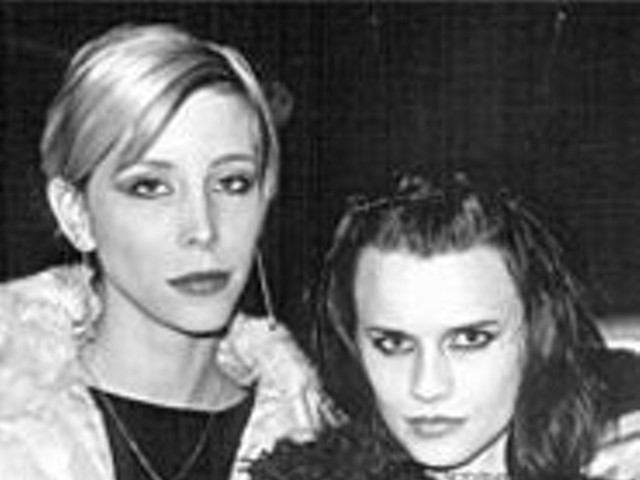Barthes comes to these conclusions after reflecting on photographs, their roles and meanings in our lives, and the photograph's relationship to history and memory. To consider the photograph as a screen is to acknowledge its strengths and its limitations, both as a holder of memory and an expression of "truth." Like a screen or curtain, the photograph's appearance is only partly the result of natural forces; the structured, conventional, and material parameters of photography also shape what we ultimately perceive of the image.
Memory, truth, history, image, time, photography and the screen -- it was fascinating, and heartening, to see how many artists included in this year's Fiber Focus 2003 exhibition at Art Saint Louis explore these very themes, from a variety of technical and theoretical perspectives. (Fascinating, because the themes and their connections are exceptionally rich and rewarding; heartening, because too often fiber art tends toward far less interesting, timeworn clichés.)
These ideas coalesce poetically in the works of Luanne Rimel, "Time & Distance" and "Exhale and Contemplate" (2002), both of which incorporate inkjet photos on silk and text. The photos represent shadows of a man and woman and suggest both the presence and absence of the human figure. Segments of Rimel's artist statement describe her use of shadows, but they enhance an understanding of the photograph and the woven silk screen as well: "The shadow forms in my work reference moments in time when persistence and transience become one ...."
Digital imagery is making an increasing mark on the field of textile art as a growing number of artists make use of the Jacquard loom, which translates digital images into weaving patterns. Jacquard weaving can produce uncanny images that simultaneously possess photographic clarity and the looseness of hand-woven fabrics. Pauline Verbeek-Cowart's stunning pieces involve digital images of textile fibers that, through the Jacquard, are reproduced in textile form. The result is a mind-bending conceptual loop masquerading in material form. Patricia Resseguie's "Passport" (2003) likewise uses the Jacquard loom to generate a witty woven replication of fingerprints.
Jayson K. Taylor's photo transfers on silk exploit the photograph's relationship to psychology, memory, and identity formation. In "Triatribe on Mental Lines" (2002), Eadweard Muybridge's nineteenth-century motion studies of nude men jumping, wrestling, and running are overlaid on photographic headshots; they literally weave together reality and psychological surreality, suggesting the dreamlike space that old photographs seem to inhabit.
Throughout the exhibition, images and scenes are filtered through scrims and screens, lending a general dreamlike quality to the atmosphere. Jennifer A. Weigel literally weaves found portrait photographs into cotton and burlap. Joan Truckenbrod's "Emerge" (2001) layers faint images on multiple hanging sheets of diaphanous material, while Jason Pollen's "Scent of Rain" (2002) allows its weightless patterns on silk to cast delicate shadows behind it. And in Rosemary Claus-Gray's "Façade VII" (2002), muted squares float in and around one another, melting the work's solidity into air.
The works that engage these themes are among the strongest in the show, but other pieces stand out as well. The revisionist, even ironic takes on quilt and tapestry traditions by Jean Brueggenjohann and Marianne Axboe alone are worth a visit to the exhibition, as is the gorgeous hanging silk by Patricia Vivod, stained with walnut, pokeberry and rust. And Erin Holliday clearly has a future in pop sculpture -- her brilliant "Pillow Lamp" (2002), a cushy concoction made of wide woven bands of red rubber, is about as far away as an artist can get from the nature-granola-hippie-world-culture extreme of fiber arts.
Speaking of which: No fiber arts show, it seems, would be complete without some of the aforementioned clichés. They're here if you want them, the beads and the baskets and the non-Western style totems and vessels. There's even a piece titled "My Inner Child" -- enough said. The curator of the show, Junco Sato Pollack, has done a noteworthy job creating an evenhanded show that covers all the bases.
But there are a great many works in this exhibition that engage photography, memory, and filters, literally or figuratively. This thematic nexus is undeniably intriguing and suited particularly well for examination in the field of textiles. It's exciting to speculate how artists in future Fiber Focus biennials might follow up on these ideas.





